Red Maple - Characteristics, Varieties, Needs, Care, Prices
Red maple is a unique tree of an unusual appearance. It's a perfect garden decoration – and more. It's commonly planted in parks and green areas. Because of its intense color and easy care, red maple has been very popular in recent years. What's more, sap can be harvested from this tree, and used in production of the famous maple syrup. Check what you should know about red maples before you plant one in your yard.
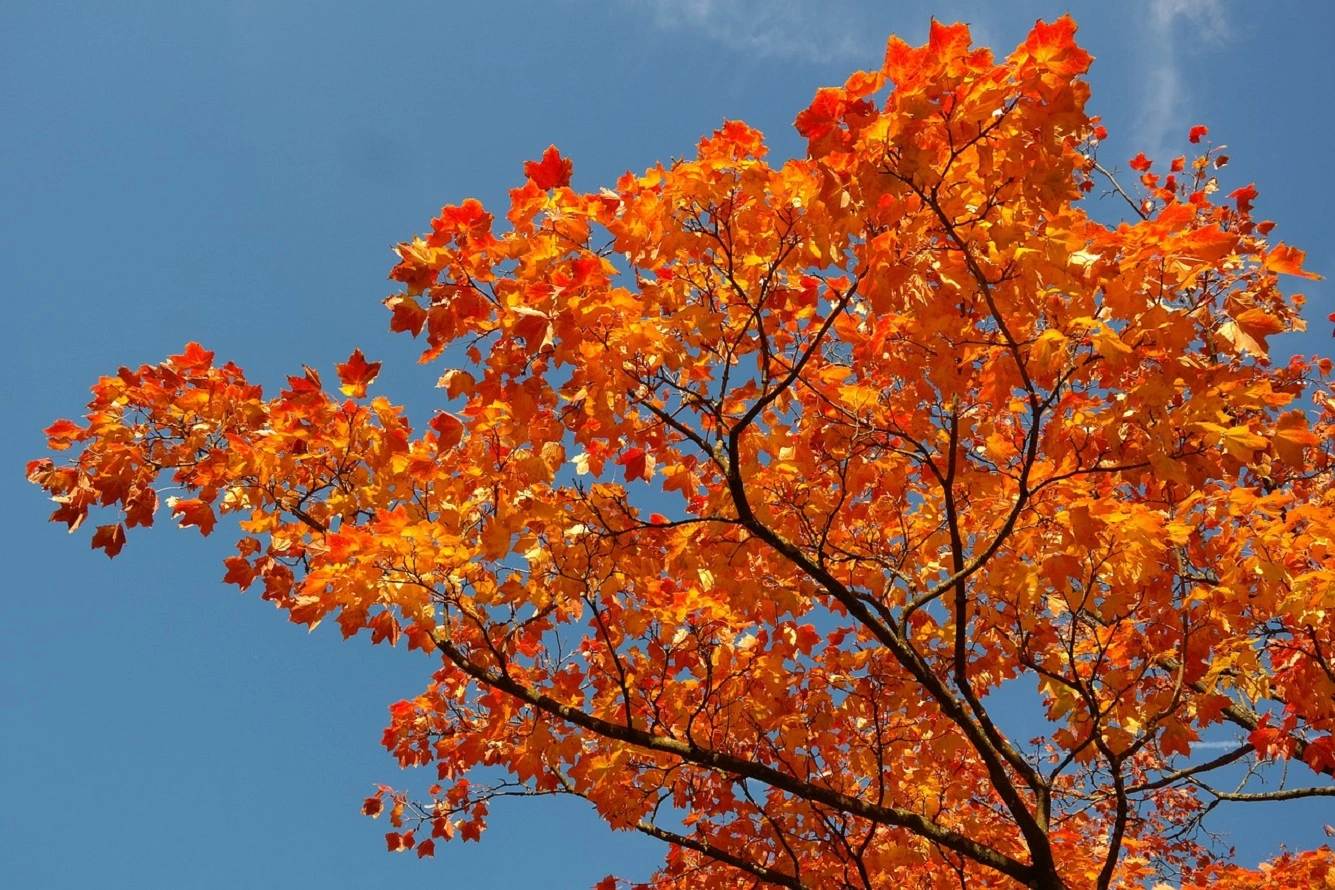
Red maple – origins and characteristics
Red maple, or Acer rubrum is a very popular tree native to North America. As estimated, it was brought to Europe in the 17th century, where it became an equally popular element of gardens as in its original country. What’s interesting, it is from this exact variety that the sap is extracted for maple syrup production.
In European conditions, the tree can grow up to 10 meters (ca. 33 ft) tall, and 7 meters (ca. 23 ft) wide. Its leaves are green at the top, but they change in autumn, turning into the characteristic red color that inspired the plant’s name.
The tree has a round and conical habit. Its palmate leaves are its decoration. Red maple blooms between March and April, when it develops tiny red flowers. Fruits appear afterwards in August, and they fall off quickly to start sprouting right away.

The most popular varieties of red maple
There are several varieties of red maple. The biggest difference between each is about the way the leaves change their colors in fall. Here are the most popular and most often picked red maple types:
- red maple RED SUNSET Franksred – this variety is characteristic for the intense red and orange leaves in autumn, the tree tends to grow intensely and reach even 15 m (ca. 49 ft) tall;
- red maple Scanlon – its habit resembles a column, its leaves turn orange-red in autumn, the tree grows up to 12 m (ca. 39 ft) tall;
- red maple Brandywine – a tree of a column-like habit, the leaves turn purple-red.
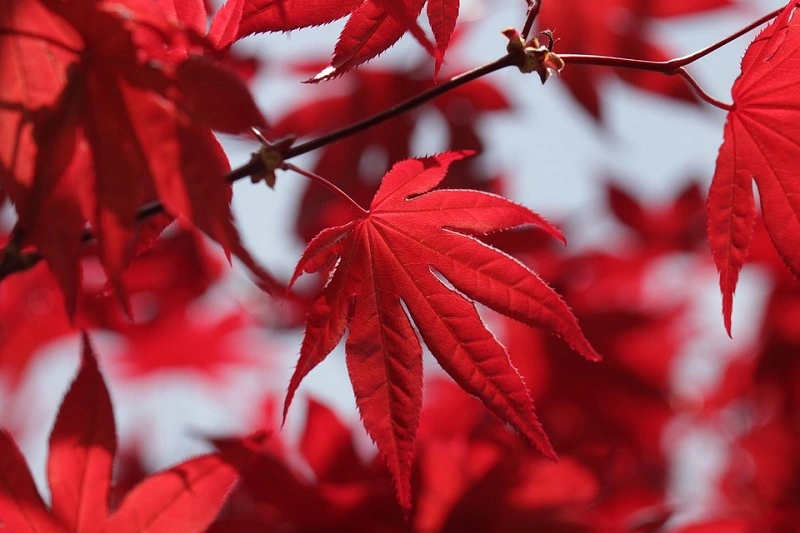
How to grow a red maple in the yard?
Red maple is not a difficult species to grow. Nonetheless, if you decide to plant this tree in your yard, make sure it grows in a good spot. It prefers sunny locations with partial shade. A place protected from strong gusts of wind is the best option.
Red maple prefers moist and acidic soil. Note that maple is a frost-resistant tree, so you don’t have to protect it before winter. It’s also immune to various types of pollution – for this reason, it’s often grown in city parks and suburban gardens.
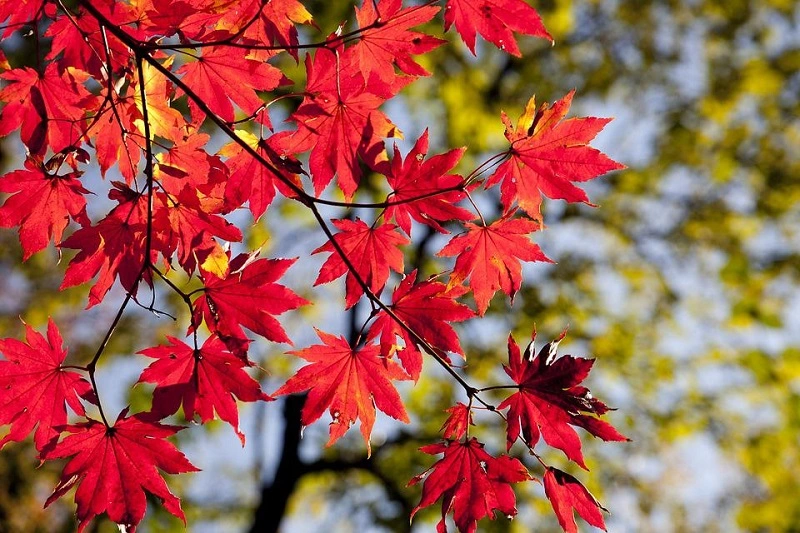
Does red maple require frequent watering?
Red maples are vulnerable to droughts. They should be watered regularly in summer, especially young trees. Thanks to this, you can keep enough moisture in the ground and protect the plant from wilting. This is also the reason why picking a good location for the tree is so crucial. If you plant it in dry soil, it might cause a serious harm to the tree. Relatively moist locations make perfect conditions for its proper growth.
Red maple – fertilizer
Red maple is a tree that doesn’t need a lot of fertilizing. Regardless, it’s good to support its development and feed it in spring and fall. You can use compost and spread a 2.5 cm layer of it around the tree trunk – so the nutrients can sink into the ground with water and reach the maple’s roots. Repeat it every 2-3 years. There’s no need to do it more frequently.
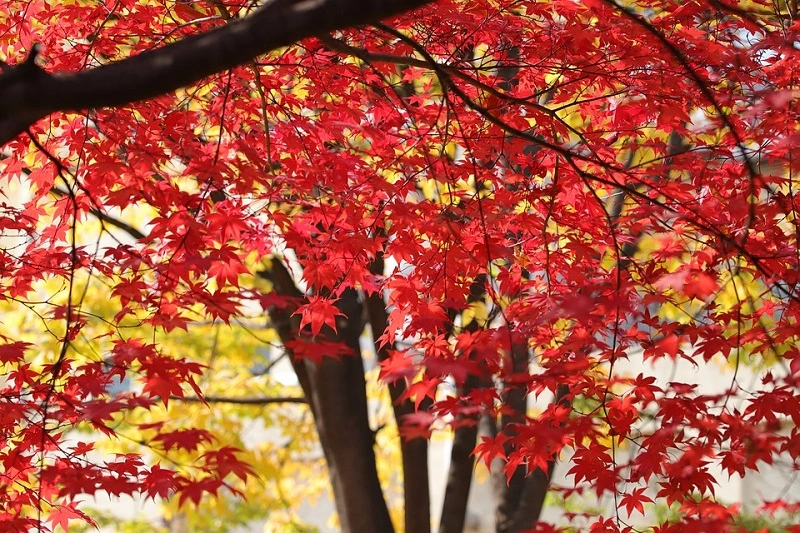
Red maple – does it need pruning?
Red maple doesn’t have to be pruned. It’s because of its natural tendency to form regular branching that later form thick bunches. You can prune any sick, crossing or visibly weakened branches. Remember that such works should be planned for summer. Make sure to use special wound healing sealers. They protect the vulnerable parts of the tree from fungi and other pathogens.
How to propagate red maple?
Red maple can be propagated in several ways. Using grafts retrieved from the tree is the most popular method. The proper length is 15-20 cm (ca. 6-8 in). You can use a rooting hormone to make the process quicker. If the graft takes root, it can be planted in a target spot in the garden as soon as next year. Another, much more time-consuming method involves using the plant’s seeds. It’s typically used by experienced gardeners.
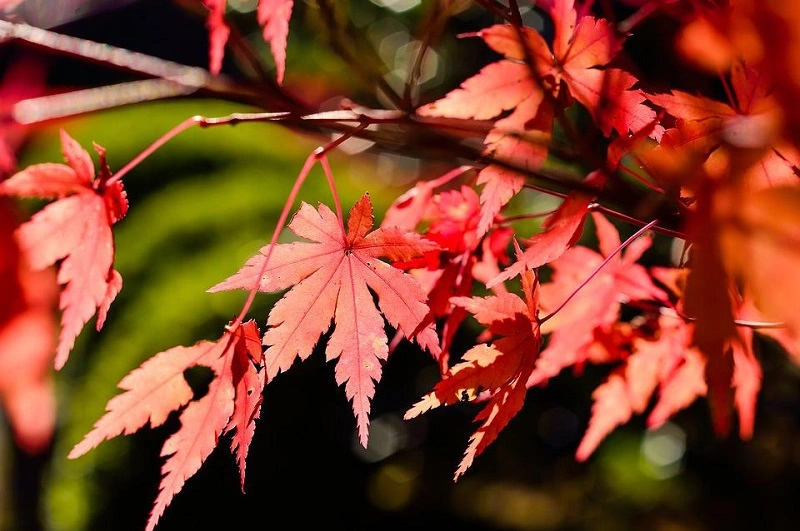
What are the common diseases of red maple?
Red maple is vulnerable to various diseases. A few are the most common. Verticillium wilt is one of them. The disease typically appears in summer, when the tree’s leaves begin to wilt. They turn yellow along the nerves, and then turn brown and fall off. The disease is caused by root wounds. Infected parts have to be removed. Additionally, a special chemical designed against this problem has to be used.
Powdery mildew is another sickness red maples might suffer from. It causes a characteristic powder on the leaves. After several days the powder turns darker and spreads onto other parts of the tree. The fungus might be caused by excessive rain and vast differences in air humidity during day and night. Removing the infected parts and spraying the tree is an effective method against this issue.
Sometimes, although very rarely and in early development stages, red maples might get attacked by grey mold. In this case, using an appropriate antifungal product is the best way to treat the disease.

📍 Red maple – what's its growth rate?
Red maple is a medium-large tree. Its growth rate is relatively slow in comparison with other trees. After many years, it gets about 12 m (ca. 40 ft) tall and 3-4 m (10-13 ft) wide. The usual growth rate is 5 cm (2 in) per year.
📍 When to plant red maples?
Red maple should be planted in accordance with the particular variety's needs. If the type is resistant to very low temperatures, you can plant it in October or November. Less hardy trees should be planted in spring. It's crucial so the plant takes root.
📍 When do red maples bloom?
Red maple develops small red flowers during its blooming season. The period falls between March and April. In August, fruits appear in the flowers' place. They fall off quickly and begin sprouting.
📍 When to prune a red maple?
Red maple shouldn't be cut in the period when it has no leaves. If pruned in winter or right before spring, it will lose a lot of sap. Plan pruning for summer. That's when the juices don't flow as intensely within the plant.
Featured articles




